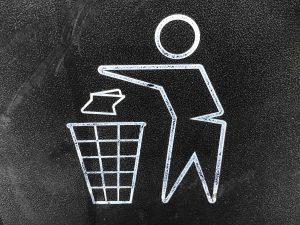There's no clear cut answer to the best method for packaging sustainability, but there are two prominent models that must be considered. A recent packaging event with many industry leaders in attendance aimed to come up with better strategies for companies that would like to make their packaging more sustainable, according to Packaging Digest. In the midst of several conversations about different bio-based polymer technologies and food waste, experts found that there are two separate philosophies that determine the effectiveness of various strategies.
The main concern in the industry, according to the news source, is whether companies should focus on processes that are resource-intensive but can be truly
 sustainable over longer periods of time, or whether they should adopt processes that are easier to access today but potentially will falter in the long-term.
sustainable over longer periods of time, or whether they should adopt processes that are easier to access today but potentially will falter in the long-term.
An example of the former is the preference of many companies to move to lightweight designs in their packaging because they can reduce the materials they use, the energy they consume, their strain on transportation, and even the overall total amount of waste they create. Experts believe another approach, a more "circular" economy model, could be just as effective. Instead of short-term reductions, they should instead look into long-term fixes like using more renewable energy, minimizing the use of toxic chemicals and cutting down on waste.
Problems down the road
The news source goes on to note that the modern packaging industry has to choose between one of these two potential choices. In most cases it can only be financially prudent for companies to either select more ecologically efficient resources in their shipping procedures, with the knowledge that those procedures may not be fully sustainable over time, or develop the "circular" economy model.
For companies struggling to make the right decision, there are plenty of different issues that may affect their adoption of these practices. Depending on the cost concerns, energy efficiency, and current resources in a company's hands, a company might not be equipped to take the long-term approach. Alternatively, companies that aim to be "trailblazers" may be able to lead other packaging companies with long-term changes. Short-term improvements may be best for companies in shifting markets, where their approaches will likely need to change over time. Initially minor but eventually great decisions should be taken by companies that have confidence in their abilities to put long-term change into place.
It's also important to consider current packaging infrastructure, in that some equipment will be easier to retrofit than others might be. Reducing packaging can often lead to increased levels of production damage or product spoilage as well. The decision should also try to play well with a product's brand - if it doesn't, that can lead to long-term quality issues.
Can prevent costly waste
Food Production Daily added that many food packaging companies in particular have an opportunity to change the industry. Citing figures from the American Institute for Packaging and the Environment, American consumers throw out more than 36 million tons of food each year, which can represent nearly $1,000 per household.
More sustainable packaging sources can fight this problem. "To most people, the fact that packaging plays a very positive role in our efforts to reduce food waste is counterintuitive," said Donna Dempsey, the executive director of AMERIPEN. "They usually think about a package when it comes time to put it in the recycling or trash bin."
Instead, though, packaging can suit both the item inside and a consumer's needs. If a package is made smaller or includes on-pack messaging, it can better inform shoppers on proper storage methods and preparation tips to prevent waste and extend food lifespans.


